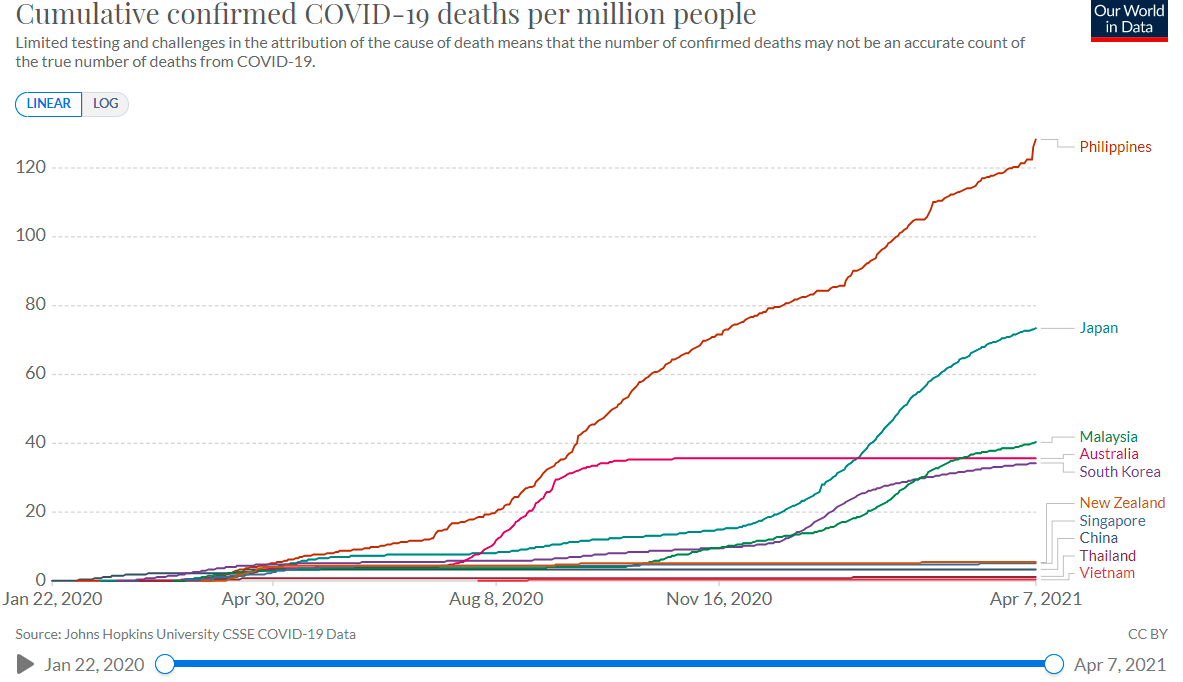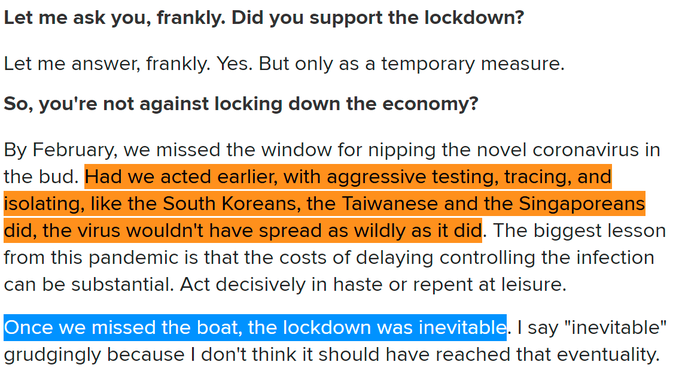1/E
Various southeast Asian nations suffered relatively few COVID-19 deaths per capita, especially in comparison to many "western" nations.
There& #39;s been a lot of speculation on why this is.
So this thread will examine some possible explanations.
https://archive.is/FkAho ">https://archive.is/FkAho&quo...
Various southeast Asian nations suffered relatively few COVID-19 deaths per capita, especially in comparison to many "western" nations.
There& #39;s been a lot of speculation on why this is.
So this thread will examine some possible explanations.
https://archive.is/FkAho ">https://archive.is/FkAho&quo...
2/E
There are at least 3 types of explanation for what& #39;s occurring in various southeast Asian countries:
1) insufficient testing that misses many infections and/or misses many COVID-19 deaths
2) lower number of infections
3) lower proportion of infected people die of COVID-19
There are at least 3 types of explanation for what& #39;s occurring in various southeast Asian countries:
1) insufficient testing that misses many infections and/or misses many COVID-19 deaths
2) lower number of infections
3) lower proportion of infected people die of COVID-19
3/E
For explanation 1:
It& #39;s unlikely their testing misses more deaths, since their excess deaths don& #39;t outpace their reported COVID-19 deaths more than in many & #39;western& #39; countries.
https://www.nytimes.com/interactive/2020/04/21/world/coronavirus-missing-deaths.html
https://www.nytimes.com/interacti... href=" https://www.bbc.com/news/world-53073046
https://www.bbc.com/news/worl... href=" https://www.economist.com/graphic-detail/2020/07/15/tracking-covid-19-excess-deaths-across-countries
https://www.economist.com/graphic-d... href=" https://www.ncbi.nlm.nih.gov/pmc/articles/PMC7852240/">https://www.ncbi.nlm.nih.gov/pmc/artic...
For explanation 1:
It& #39;s unlikely their testing misses more deaths, since their excess deaths don& #39;t outpace their reported COVID-19 deaths more than in many & #39;western& #39; countries.
https://www.nytimes.com/interactive/2020/04/21/world/coronavirus-missing-deaths.html
4/E
Insufficient PCR testing, or antigen testing, early on might still miss past infections. Antibody testing addresses that; this will be discussed more a bit later.
https://twitter.com/AtomsksSanakan/status/1347304761415135232
https://twitter.com/AtomsksSa... href=" https://archive.is/sjUkT ">https://archive.is/sjUkT&quo...
Insufficient PCR testing, or antigen testing, early on might still miss past infections. Antibody testing addresses that; this will be discussed more a bit later.
https://twitter.com/AtomsksSanakan/status/1347304761415135232
5/E
For explanation #3:
IFR (infection fatality rate) is the proportion of SARS-CoV-2-infected people who die of COVID-19. So explanation #3 states IFR is lower in southeast Asian nations.
Some proposed reasons for why this could be:
https://twitter.com/AskeladdenTX/status/1309633580008644609">https://twitter.com/Askeladde...
For explanation #3:
IFR (infection fatality rate) is the proportion of SARS-CoV-2-infected people who die of COVID-19. So explanation #3 states IFR is lower in southeast Asian nations.
Some proposed reasons for why this could be:
https://twitter.com/AskeladdenTX/status/1309633580008644609">https://twitter.com/Askeladde...
6/E
The co-morbidities explanation seems less plausible, since IFR is driven more by age and sex than by co-morbidities.
IFR increases with age, as do co-morbidities, while the rate of various co-morbidities differs by sex.
https://link.springer.com/article/10.1007/s10654-020-00698-1">https://link.springer.com/article/1...
The co-morbidities explanation seems less plausible, since IFR is driven more by age and sex than by co-morbidities.
IFR increases with age, as do co-morbidities, while the rate of various co-morbidities differs by sex.
https://link.springer.com/article/10.1007/s10654-020-00698-1">https://link.springer.com/article/1...
7/E
South Korea + Japan are useful test cases here, since they have relatively old populations with less obesity than in many "western" nations.
So explanation #3 would predict those 2 nations to have lower IFRs.
https://www.populationpyramid.net/world/2019/
https://www.populationpyramid.net/world/201... href=" https://ourworldindata.org/obesity ">https://ourworldindata.org/obesity&q...
South Korea + Japan are useful test cases here, since they have relatively old populations with less obesity than in many "western" nations.
So explanation #3 would predict those 2 nations to have lower IFRs.
https://www.populationpyramid.net/world/2019/
8/E
Yet South Korea& #39;s IFR is comparable to western nations in spring/summer, regardless of whether one uses antibody testing or PCR-based modeling to estimate the number of infections.
[~0.6% August IFR: https://arxiv.org/pdf/2101.11991.pdf]
https://arxiv.org/pdf/2101.... href=" https://twitter.com/AtomsksSanakan/status/1312562674656522240
https://twitter.com/AtomsksSa... href=" https://link.springer.com/article/10.1007/s10654-020-00698-1">https://link.springer.com/article/1...
Yet South Korea& #39;s IFR is comparable to western nations in spring/summer, regardless of whether one uses antibody testing or PCR-based modeling to estimate the number of infections.
[~0.6% August IFR: https://arxiv.org/pdf/2101.11991.pdf]
9/E
Japan& #39;s IFR is on the higher-end of what& #39;s seen in western nations.
[ https://twitter.com/AtomsksSanakan/status/1343866026879053824]
https://twitter.com/AtomsksSa... href=" https://twitter.com/AtomsksSanakan/status/1327772908819779584
[with:">https://twitter.com/AtomsksSa... https://wwwnc.cdc.gov/eid/article/27/2/20-4088_article]
And">https://wwwnc.cdc.gov/eid/artic... China& #39;s IFR is comparable to that of western nations.
https://www.thelancet.com/journals/lanmic/article/PIIS2666-5247(20)30099-9/fulltext
[with:">https://www.thelancet.com/journals/... https://www.thelancet.com/journals/lanwpc/article/PIIS2666-6065(21)00003-1/fulltext]">https://www.thelancet.com/journals/...
Japan& #39;s IFR is on the higher-end of what& #39;s seen in western nations.
[ https://twitter.com/AtomsksSanakan/status/1343866026879053824]
[with:">https://twitter.com/AtomsksSa... https://wwwnc.cdc.gov/eid/article/27/2/20-4088_article]
And">https://wwwnc.cdc.gov/eid/artic... China& #39;s IFR is comparable to that of western nations.
https://www.thelancet.com/journals/lanmic/article/PIIS2666-5247(20)30099-9/fulltext
[with:">https://www.thelancet.com/journals/... https://www.thelancet.com/journals/lanwpc/article/PIIS2666-6065(21)00003-1/fulltext]">https://www.thelancet.com/journals/...
10/E
So explanation #3 is likely false.
That leaves explanation #2:
As per part 4/E, antibody testing on representative samples allows one to determine the number of infected people, without the limitations of PCR + antigen testing from explanation #1 https://twitter.com/AtomsksSanakan/status/1341185258964836353">https://twitter.com/AtomsksSa...
So explanation #3 is likely false.
That leaves explanation #2:
As per part 4/E, antibody testing on representative samples allows one to determine the number of infected people, without the limitations of PCR + antigen testing from explanation #1 https://twitter.com/AtomsksSanakan/status/1341185258964836353">https://twitter.com/AtomsksSa...
11/E
Japan& #39;s antibody-based infection rates were ~1% or less
https://onlinelibrary.wiley.com/doi/full/10.1002/jgf2.408
https://onlinelibrary.wiley.com/doi/full/... href=" https://www.mhlw.go.jp/stf/seisakunitsuite/bunya/0000121431_00132.html
https://www.mhlw.go.jp/stf/seisa... href=" https://www.fukushihoken.metro.tokyo.lg.jp/iryo/kansen/koutaikensa.html
https://www.fukushihoken.metro.tokyo.lg.jp/iryo/kans... href=" http://www.pref.osaka.lg.jp/hodo/index.php?site=fumin&pageId=39934
https://www.pref.osaka.lg.jp/hodo/inde... href=" https://www.pref.miyagi.jp/uploaded/attachment/823102.pdf
https://www.pref.miyagi.jp/uploaded/... href=" https://www.pref.aichi.jp/site/covid19-aichi/koutaikekka.html
https://www.pref.aichi.jp/site/covi... href=" https://www.pref.fukuoka.lg.jp/press-release/press-release-corona-koutai.html
https://www.pref.fukuoka.lg.jp/press-rel... href=" https://www.pref.hiroshima.lg.jp/site/2019-ncov/message20201030.html
https://www.pref.hiroshima.lg.jp/site/2019... href=" https://wwwnc.cdc.gov/eid/article/27/2/20-4088_article">https://wwwnc.cdc.gov/eid/artic...
Japan& #39;s antibody-based infection rates were ~1% or less
https://onlinelibrary.wiley.com/doi/full/10.1002/jgf2.408
12/E
Low antibody-based infection rates (i.e. seroprevalence) continued into autumn 2020 in Japan, as per 11/E, + in South Korea:
https://arxiv.org/abs/2101.11991
China& #39;s">https://arxiv.org/abs/2101.... seroprevalence was highest in Wuhan in spring, and <1% elsewhere:
https://www.clinicalmicrobiologyandinfection.com/article/S1198-743X(20)30598-X/fulltext
https://www.clinicalmicrobiologyandinfection.com/article/S... href=" https://www.thelancet.com/journals/lanwpc/article/PIIS2666-6065(21)00003-1/fulltext">https://www.thelancet.com/journals/...
Low antibody-based infection rates (i.e. seroprevalence) continued into autumn 2020 in Japan, as per 11/E, + in South Korea:
https://arxiv.org/abs/2101.11991
China& #39;s">https://arxiv.org/abs/2101.... seroprevalence was highest in Wuhan in spring, and <1% elsewhere:
https://www.clinicalmicrobiologyandinfection.com/article/S1198-743X(20)30598-X/fulltext
13/E
Western nations had much higher infection rates, with their hardest-hit regions often having rates 1 or 2 orders of magnitude more than in the three southeast Asian nations noted before
https://www.istat.it/it/files//2020/08/ReportPrimiRisultatiIndagineSiero.pdf
[https://www.istat.it/it/files/... href=" https://www.mscbs.gob.es/gabinetePrensa/notaPrensa/pdf/15.12151220163348113.pdf]
https://www.mscbs.gob.es/gabineteP... href=" https://portalcne.isciii.es/enecovid19/informes/informe_final.pdf">https://portalcne.isciii.es/enecovid1...
Western nations had much higher infection rates, with their hardest-hit regions often having rates 1 or 2 orders of magnitude more than in the three southeast Asian nations noted before
https://www.istat.it/it/files//2020/08/ReportPrimiRisultatiIndagineSiero.pdf
[
14/E
So explanation #2 is most likely correct.
https://www.ukbiobank.ac.uk/media/x0nd5sul/ukb_serologystudy_report_revised_6months_jan21.pdf
https://www.ukbiobank.ac.uk/media/x0n... href=" https://www.amjmed.com/article/S0002-9343(20)30909-8/fulltext
https://www.amjmed.com/article/S... href=" https://www.medrxiv.org/content/10.1101/2020.10.11.20210922v1.full?versioned=true
https://www.medrxiv.org/content/1... href=" https://www.uoflnews.com/post/uofltoday/covid-19-rates-continue-to-increase-with-highest-rates-among-18-34-year-olds/
https://www.uoflnews.com/post/uofl... href=" https://www.medrxiv.org/content/10.1101/2020.07.01.20143966v1.full
https://www.medrxiv.org/content/1... href=" https://www.medrxiv.org/content/10.1101/2020.11.02.20221309v1
[https://www.medrxiv.org/content/1... href=" https://www.medrxiv.org/content/10.1101/2020.12.16.20248180v1.full-text
https://www.medrxiv.org/content/1... href=" https://www.thelancet.com/journals/laninf/article/PIIS1473-3099(21)00054-2/fulltext]
https://www.thelancet.com/journals/... href=" https://www.corona-immunitas.ch/en/ ">https://www.corona-immunitas.ch/en/"...
So explanation #2 is most likely correct.
https://www.ukbiobank.ac.uk/media/x0nd5sul/ukb_serologystudy_report_revised_6months_jan21.pdf
[
15/E
It& #39;s unlikely that prior infection with other coronaviruses explains this (see part 5/E), since:
- innate immunity does not improve substantially
- T cells do not primarily limit infections, beyond impacting on B cells
https://twitter.com/profshanecrotty/status/1309170532965920769
https://twitter.com/profshane... href=" https://twitter.com/AtomsksSanakan/status/1309311345947484166">https://twitter.com/AtomsksSa...
It& #39;s unlikely that prior infection with other coronaviruses explains this (see part 5/E), since:
- innate immunity does not improve substantially
- T cells do not primarily limit infections, beyond impacting on B cells
https://twitter.com/profshanecrotty/status/1309170532965920769
16/E
Similarly, this likely is not explained by cross-reactive B cells, plasma cells, and/or antibodies from prior infection with other coronaviruses.
https://twitter.com/AtomsksSanakan/status/1312654302742183936
https://twitter.com/AtomsksSa... href=" https://twitter.com/AtomsksSanakan/status/891040491214688257
https://twitter.com/AtomsksSa... href=" https://www.nature.com/articles/s41591-020-1083-1
https://www.nature.com/articles/... href=" https://www.medrxiv.org/content/10.1101/2020.06.29.20142596v1
https://www.medrxiv.org/content/1... href=" https://www.medrxiv.org/content/10.1101/2020.08.14.20173393v1">https://www.medrxiv.org/content/1...
Similarly, this likely is not explained by cross-reactive B cells, plasma cells, and/or antibodies from prior infection with other coronaviruses.
https://twitter.com/AtomsksSanakan/status/1312654302742183936
17/E
Many of those offering these alternative explanations do so for ideological reasons and/or in bad faith, because they want to avoid an obvious answer:
Policies + behaviors in southeast Asia limited infections
20:42 - 25:52 : https://www.youtube.com/watch?v=t4yZaoA90Jk&t=1242s">https://www.youtube.com/watch...
Many of those offering these alternative explanations do so for ideological reasons and/or in bad faith, because they want to avoid an obvious answer:
Policies + behaviors in southeast Asia limited infections
20:42 - 25:52 : https://www.youtube.com/watch?v=t4yZaoA90Jk&t=1242s">https://www.youtube.com/watch...
18/E
So instead of making excuses about how southeast Asian nations have special exposure to other coronaviruses, or better immune systems, or..., we in western nations should own up to the reality that their policies + practices worked.
Deal with it. https://abs.twimg.com/emoji/v2/... draggable="false" alt="🤷♂️" title="Achselzuckender Mann" aria-label="Emoji: Achselzuckender Mann">
https://abs.twimg.com/emoji/v2/... draggable="false" alt="🤷♂️" title="Achselzuckender Mann" aria-label="Emoji: Achselzuckender Mann">
https://twitter.com/AtomsksSanakan/status/1325442309668921351">https://twitter.com/AtomsksSa...
So instead of making excuses about how southeast Asian nations have special exposure to other coronaviruses, or better immune systems, or..., we in western nations should own up to the reality that their policies + practices worked.
Deal with it.
https://twitter.com/AtomsksSanakan/status/1325442309668921351">https://twitter.com/AtomsksSa...
19/E
And h/t to @KawasakiKR11 for help in finding seroprevalence studies for Japan in part 11/E, since I only read and write in English. https://twitter.com/AtomsksSanakan/status/1364470684949299203">https://twitter.com/AtomsksSa...
And h/t to @KawasakiKR11 for help in finding seroprevalence studies for Japan in part 11/E, since I only read and write in English. https://twitter.com/AtomsksSanakan/status/1364470684949299203">https://twitter.com/AtomsksSa...
20/E
Sources on infection-limiting strategies in southeast Asia:
(act early:
https://link.springer.com/article/10.1007/s10640-020-00466-5
https://link.springer.com/article/1... href=" https://academic.oup.com/cid/article/71/12/3174/5866094)
https://academic.oup.com/cid/artic... href=" https://twitter.com/AtomsksSanakan/status/1364599742257364995
https://twitter.com/AtomsksSa... href=" https://web.archive.org/web/20210224184118/https://www.mhlw.go.jp/content/10900000/000635891.pdf
https://web.archive.org/web/20210... href=" https://journals.sagepub.com/doi/full/10.1177/0275074020943707
https://journals.sagepub.com/doi/full/... href=" https://www.ncbi.nlm.nih.gov/pmc/articles/PMC7567433/
https://www.ncbi.nlm.nih.gov/pmc/artic... href=" https://www.thelancet.com/article/S0140-6736(20)32007-9/fulltext
https://www.thelancet.com/article/S... href=" https://www.ncbi.nlm.nih.gov/pmc/articles/PMC7189844/">https://www.ncbi.nlm.nih.gov/pmc/artic...
Sources on infection-limiting strategies in southeast Asia:
(act early:
https://link.springer.com/article/10.1007/s10640-020-00466-5
21/E
Examples of what I critiqued from those using a Tokyo study w/ non-representative sampling [ https://www.twitter.com/AtomsksSanakan/status/1365177417023774720]:
https://www.twitter.com/AtomsksSa... href=" https://www.twitter.com/carlheneghan/status/1309558504307544064
https://www.twitter.com/carlheneg... href=" https://www.twitter.com/MonicaGandhi9/status/1335747616148127745
https://www.twitter.com/MonicaGan... href=" https://www.twitter.com/dwallacewells/status/1308855749821554689
https://www.twitter.com/dwallacew... href=" https://www.twitter.com/AlexBerenson/status/1308798932097658881
https://www.twitter.com/AlexBeren... href=" https://www.twitter.com/MLevitt_NP2013/status/1308979101215096834
Nic">https://www.twitter.com/MLevitt_N... Lewis:
https://judithcurry.com/2020/10/14/t-cell-cross-reactivity-and-the-herd-immunity-threshold/">https://judithcurry.com/2020/10/1...
Examples of what I critiqued from those using a Tokyo study w/ non-representative sampling [ https://www.twitter.com/AtomsksSanakan/status/1365177417023774720]:
Nic">https://www.twitter.com/MLevitt_N... Lewis:
https://judithcurry.com/2020/10/14/t-cell-cross-reactivity-and-the-herd-immunity-threshold/">https://judithcurry.com/2020/10/1...
22/E
Further context on why prior infection with other coronaviruses does not adequately explain low COVID-19 deaths per capita in southeast Asian countries, especially in light of low seroprevalence:
https://twitter.com/AtomsksSanakan/status/1364660714342932487
https://twitter.com/AtomsksSa... href=" https://twitter.com/AtomsksSanakan/status/1364664008830246913
https://twitter.com/AtomsksSa... href=" https://twitter.com/AtomsksSanakan/status/1365870324861067266">https://twitter.com/AtomsksSa...
Further context on why prior infection with other coronaviruses does not adequately explain low COVID-19 deaths per capita in southeast Asian countries, especially in light of low seroprevalence:
https://twitter.com/AtomsksSanakan/status/1364660714342932487
23/E
Below John Ioannidis defends a failed version of explanation #3 in February 2021. He under-estimated IFR in southeast Asia, as covered in parts 8/E + 9/E, along with other threads.
https://twitter.com/AtomsksSanakan/status/1369420295187144709
https://twitter.com/AtomsksSa... href=" https://twitter.com/AtomsksSanakan/status/1341286778884550656
3:03">https://twitter.com/AtomsksSa... and 16:05 :
https://youtube.com/watch?v=9szCNNZrPK8&t=965s">https://youtube.com/watch...
Below John Ioannidis defends a failed version of explanation #3 in February 2021. He under-estimated IFR in southeast Asia, as covered in parts 8/E + 9/E, along with other threads.
https://twitter.com/AtomsksSanakan/status/1369420295187144709
3:03">https://twitter.com/AtomsksSa... and 16:05 :
https://youtube.com/watch?v=9szCNNZrPK8&t=965s">https://youtube.com/watch...
24/E
Re: "Ioannidis defends a failed version of explanation #3 [...]. He under-estimated IFR in southeast Asia"
Update on Asian seroprevalence studies:
https://www.thelancet.com/journals/lancet/article/PIIS0140-6736(21)00238-5/fulltext
https://www.thelancet.com/journals/... href=" https://www.mhlw.go.jp/content/000761671.pdf
https://www.mhlw.go.jp/content/0... href=" https://twitter.com/KawasakiKR11/status/1379530595148181507
He& #39;s">https://twitter.com/KawasakiK... still doing it:
https://twitter.com/AtomsksSanakan/status/1376029923903672322">https://twitter.com/AtomsksSa...
Re: "Ioannidis defends a failed version of explanation #3 [...]. He under-estimated IFR in southeast Asia"
Update on Asian seroprevalence studies:
https://www.thelancet.com/journals/lancet/article/PIIS0140-6736(21)00238-5/fulltext
He& #39;s">https://twitter.com/KawasakiK... still doing it:
https://twitter.com/AtomsksSanakan/status/1376029923903672322">https://twitter.com/AtomsksSa...
25/E
Ioannidis, March 2021:
"I& #39;m not talking about [New Zealand, Vietnam, Taiwan] that did a wonderful job and did exactly what I was saying a year ago. Test, test, test. That& #39;s what the WHO was saying. And then isolate, then contact trace"
31:35 - 31:47 https://www.youtube.com/watch?v=HBd5Q8NpvoI&t=1895s">https://www.youtube.com/watch...
Ioannidis, March 2021:
"I& #39;m not talking about [New Zealand, Vietnam, Taiwan] that did a wonderful job and did exactly what I was saying a year ago. Test, test, test. That& #39;s what the WHO was saying. And then isolate, then contact trace"
31:35 - 31:47 https://www.youtube.com/watch?v=HBd5Q8NpvoI&t=1895s">https://www.youtube.com/watch...
26/E
Basic summary of the thread:
Southeast Asian countries successfully limited COVID-19 deaths predominately by pursuing policies + behaviors that prevented infections.
It& #39;s not a matter of them having better immune systems, special pre-exposure to other viruses, etc.
Basic summary of the thread:
Southeast Asian countries successfully limited COVID-19 deaths predominately by pursuing policies + behaviors that prevented infections.
It& #39;s not a matter of them having better immune systems, special pre-exposure to other viruses, etc.
27/E
Based on this thread, one would predict that Malaysia& #39;s NHMS results (likely to be released in May/June) would show <2% of people infected, with an IFR of ≥0.4%.
http://iku.moh.gov.my/nhms
https://iku.moh.gov.my/nhms"... href=" https://twitter.com/AtomsksSanakan/status/1360114634662019073
https://twitter.com/AtomsksSa... href=" https://ourworldindata.org/explorers/coronavirus-data-explorer?zoomToSelection=true&pickerSort=asc&pickerMetric=location&Metric=Confirmed+deaths&Interval=Cumulative&Relative+to+Population=true&Align+outbreaks=false&country=KOR~JPN~CHN~VNM~SGP~PHL~EuropeanUnion~AUS~NZL~THA~MYS">https://ourworldindata.org/explorers...
Based on this thread, one would predict that Malaysia& #39;s NHMS results (likely to be released in May/June) would show <2% of people infected, with an IFR of ≥0.4%.
http://iku.moh.gov.my/nhms
28/E
https://twitter.com/AtomsksSanakan/status/1379865372740960259
Ioannidis& #39;">https://twitter.com/AtomsksSa... debate opponent, June:
"restrictions cannot safely be lifted without the capacity for massive testing, contact tracing, and adequate protection for high risk populations"
https://bmj.com/content/369/bmj.m1924
Ioannidis,">https://bmj.com/content/3... July:
#selection-921.0-947.146">https://archive.is/VVxam #selection-921.0-947.146">https://archive.is/VVxam...
https://twitter.com/AtomsksSanakan/status/1379865372740960259
Ioannidis& #39;">https://twitter.com/AtomsksSa... debate opponent, June:
"restrictions cannot safely be lifted without the capacity for massive testing, contact tracing, and adequate protection for high risk populations"
https://bmj.com/content/369/bmj.m1924
Ioannidis,">https://bmj.com/content/3... July:
#selection-921.0-947.146">https://archive.is/VVxam #selection-921.0-947.146">https://archive.is/VVxam...

 Read on Twitter
Read on Twitter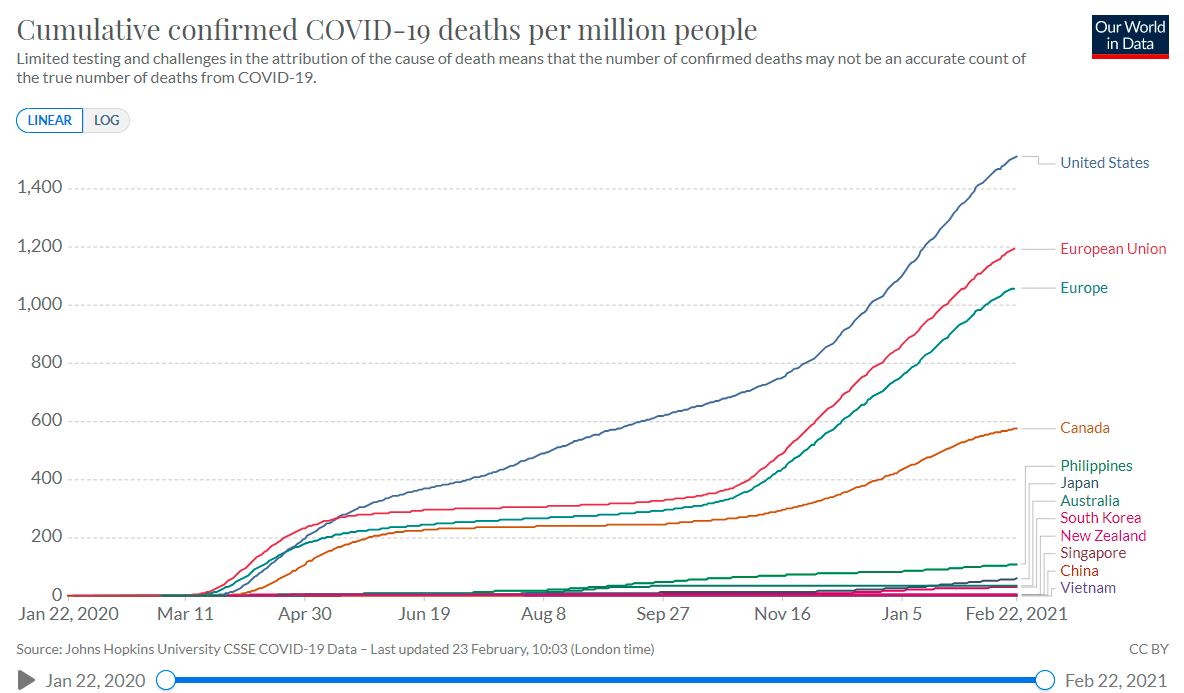
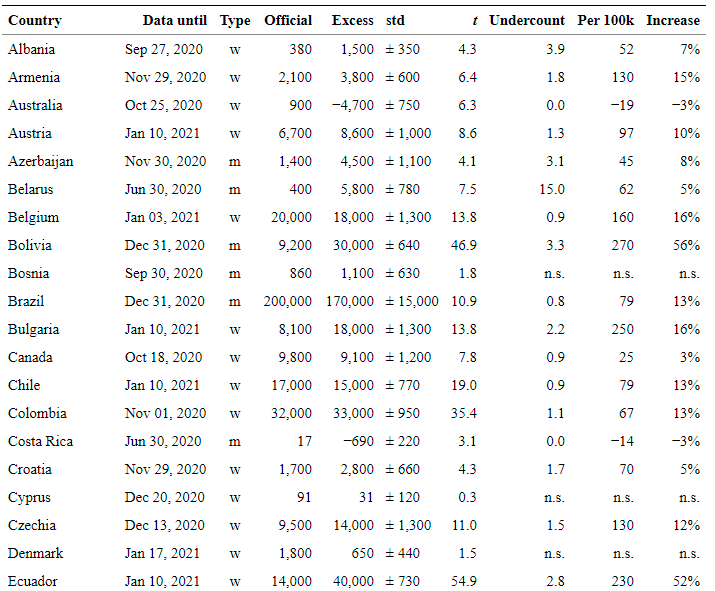
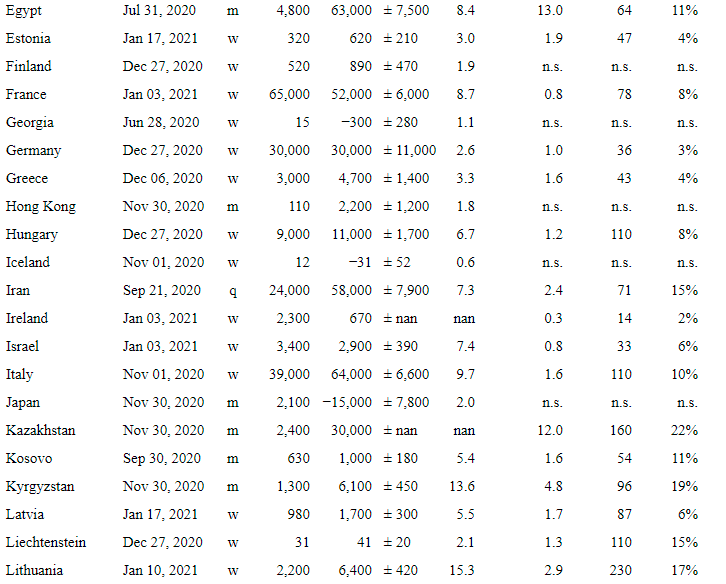
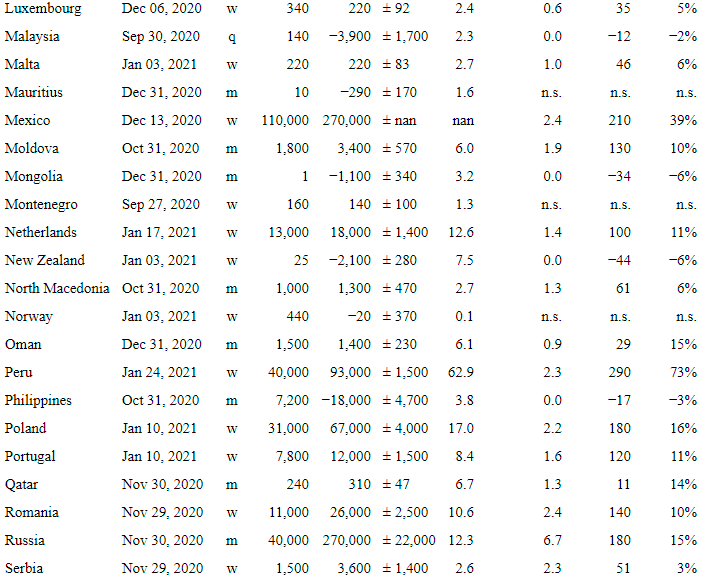
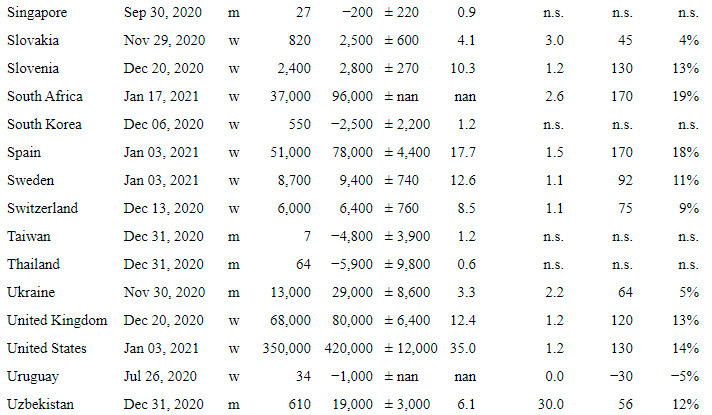
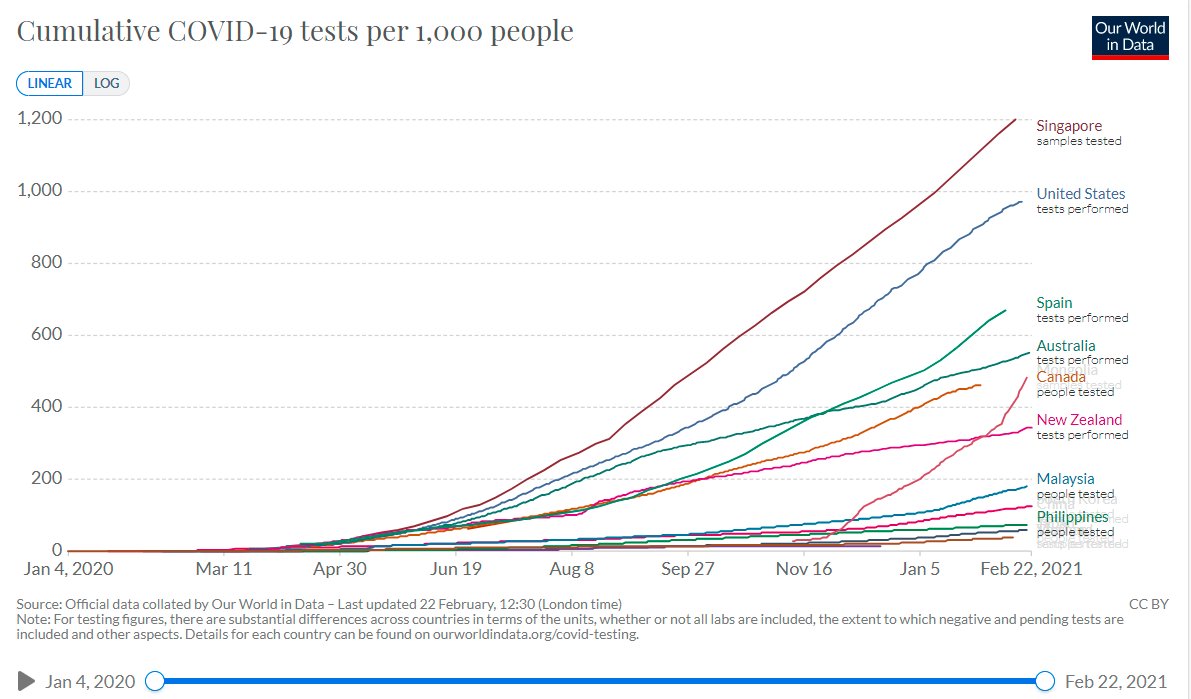 https://archive.is/sjUkT&quo..." title="4/EInsufficient PCR testing, or antigen testing, early on might still miss past infections. Antibody testing addresses that; this will be discussed more a bit later. https://twitter.com/AtomsksSa... href=" https://archive.is/sjUkT ">https://archive.is/sjUkT&quo..." class="img-responsive" style="max-width:100%;"/>
https://archive.is/sjUkT&quo..." title="4/EInsufficient PCR testing, or antigen testing, early on might still miss past infections. Antibody testing addresses that; this will be discussed more a bit later. https://twitter.com/AtomsksSa... href=" https://archive.is/sjUkT ">https://archive.is/sjUkT&quo..." class="img-responsive" style="max-width:100%;"/>
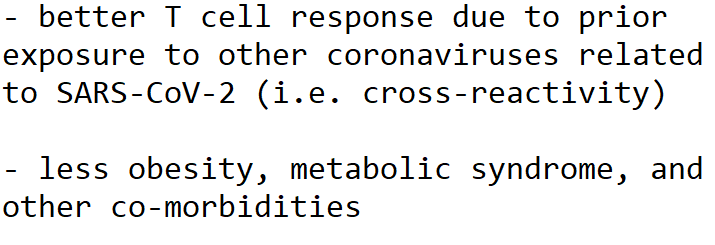
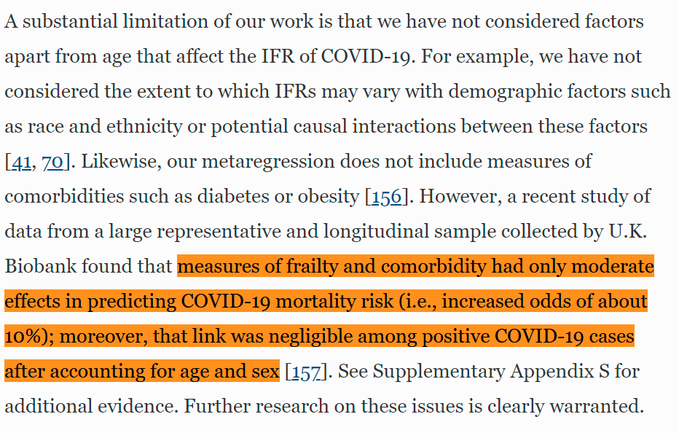
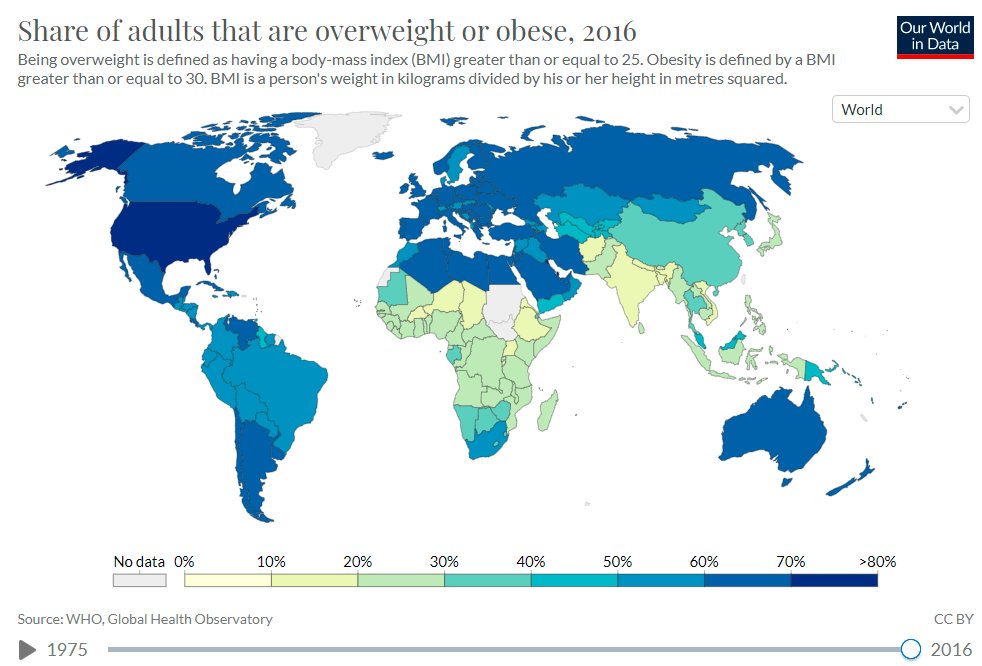 https://ourworldindata.org/obesity&q..." title="7/ESouth Korea + Japan are useful test cases here, since they have relatively old populations with less obesity than in many "western" nations.So explanation #3 would predict those 2 nations to have lower IFRs. https://www.populationpyramid.net/world/201... href=" https://ourworldindata.org/obesity ">https://ourworldindata.org/obesity&q..." class="img-responsive" style="max-width:100%;"/>
https://ourworldindata.org/obesity&q..." title="7/ESouth Korea + Japan are useful test cases here, since they have relatively old populations with less obesity than in many "western" nations.So explanation #3 would predict those 2 nations to have lower IFRs. https://www.populationpyramid.net/world/201... href=" https://ourworldindata.org/obesity ">https://ourworldindata.org/obesity&q..." class="img-responsive" style="max-width:100%;"/>
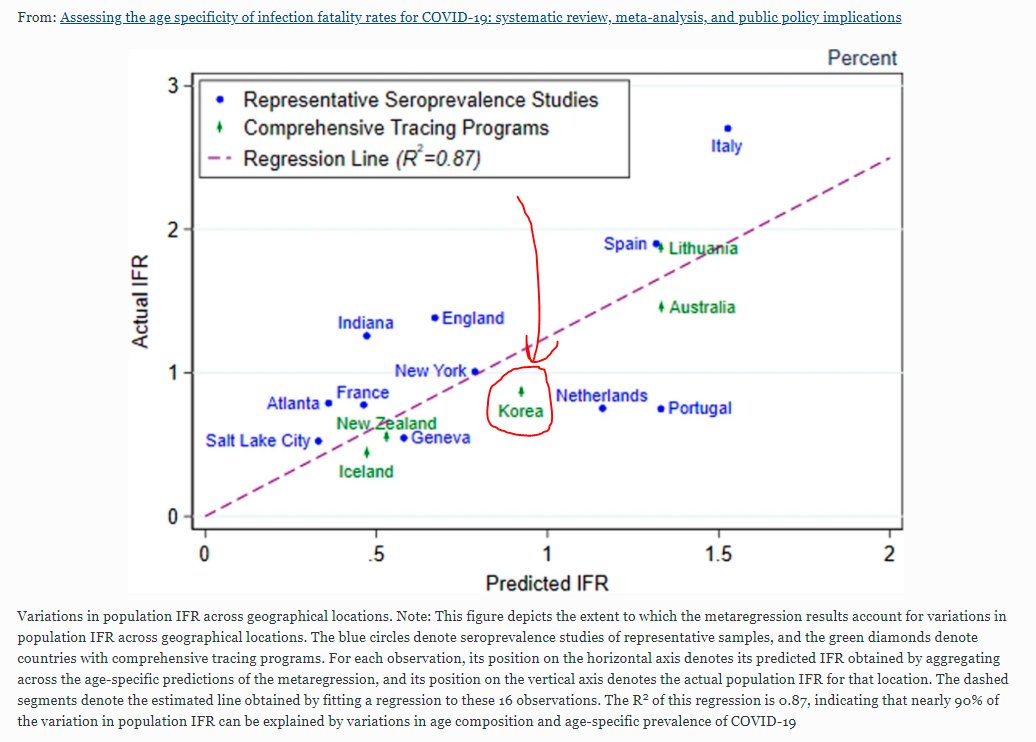
 https://twitter.com/AtomsksSa... https://wwwnc.cdc.gov/eid/artic... China& #39;s IFR is comparable to that of western nations. https://www.thelancet.com/journals/... https://www.thelancet.com/journals/..." title="9/EJapan& #39;s IFR is on the higher-end of what& #39;s seen in western nations.[ https://twitter.com/AtomsksSa... href=" https://twitter.com/AtomsksSanakan/status/1327772908819779584[with:">https://twitter.com/AtomsksSa... https://wwwnc.cdc.gov/eid/artic... China& #39;s IFR is comparable to that of western nations. https://www.thelancet.com/journals/... https://www.thelancet.com/journals/..." class="img-responsive" style="max-width:100%;"/>
https://twitter.com/AtomsksSa... https://wwwnc.cdc.gov/eid/artic... China& #39;s IFR is comparable to that of western nations. https://www.thelancet.com/journals/... https://www.thelancet.com/journals/..." title="9/EJapan& #39;s IFR is on the higher-end of what& #39;s seen in western nations.[ https://twitter.com/AtomsksSa... href=" https://twitter.com/AtomsksSanakan/status/1327772908819779584[with:">https://twitter.com/AtomsksSa... https://wwwnc.cdc.gov/eid/artic... China& #39;s IFR is comparable to that of western nations. https://www.thelancet.com/journals/... https://www.thelancet.com/journals/..." class="img-responsive" style="max-width:100%;"/>
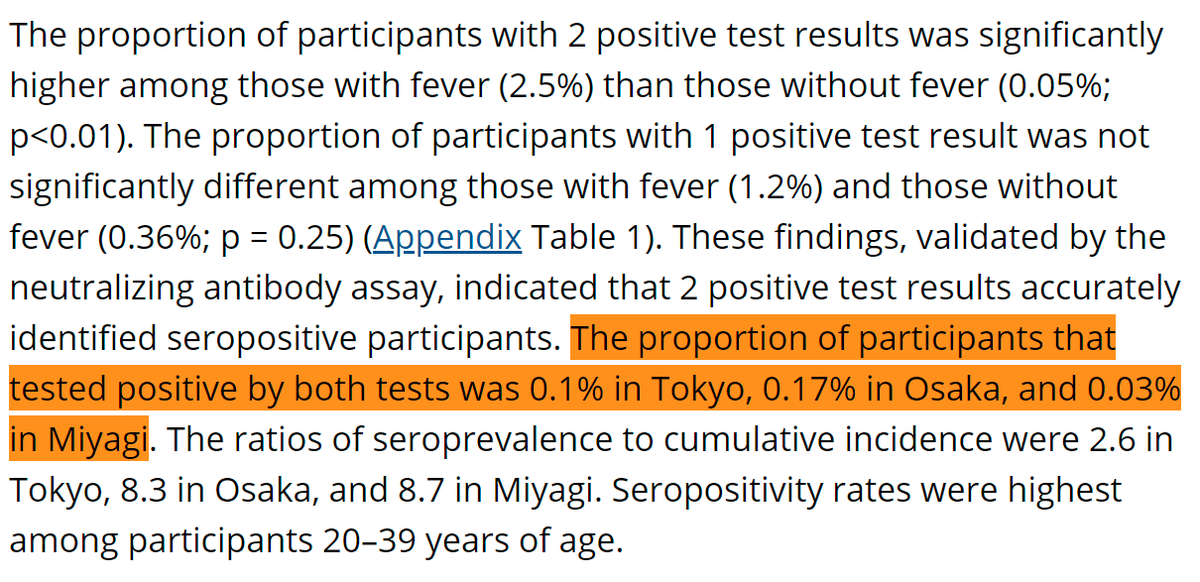
 https://www.thelancet.com/journals/..." title="12/ELow antibody-based infection rates (i.e. seroprevalence) continued into autumn 2020 in Japan, as per 11/E, + in South Korea: https://arxiv.org/abs/2101.... seroprevalence was highest in Wuhan in spring, and <1% elsewhere: https://www.clinicalmicrobiologyandinfection.com/article/S... href=" https://www.thelancet.com/journals/lanwpc/article/PIIS2666-6065(21)00003-1/fulltext">https://www.thelancet.com/journals/..." class="img-responsive" style="max-width:100%;"/>
https://www.thelancet.com/journals/..." title="12/ELow antibody-based infection rates (i.e. seroprevalence) continued into autumn 2020 in Japan, as per 11/E, + in South Korea: https://arxiv.org/abs/2101.... seroprevalence was highest in Wuhan in spring, and <1% elsewhere: https://www.clinicalmicrobiologyandinfection.com/article/S... href=" https://www.thelancet.com/journals/lanwpc/article/PIIS2666-6065(21)00003-1/fulltext">https://www.thelancet.com/journals/..." class="img-responsive" style="max-width:100%;"/>
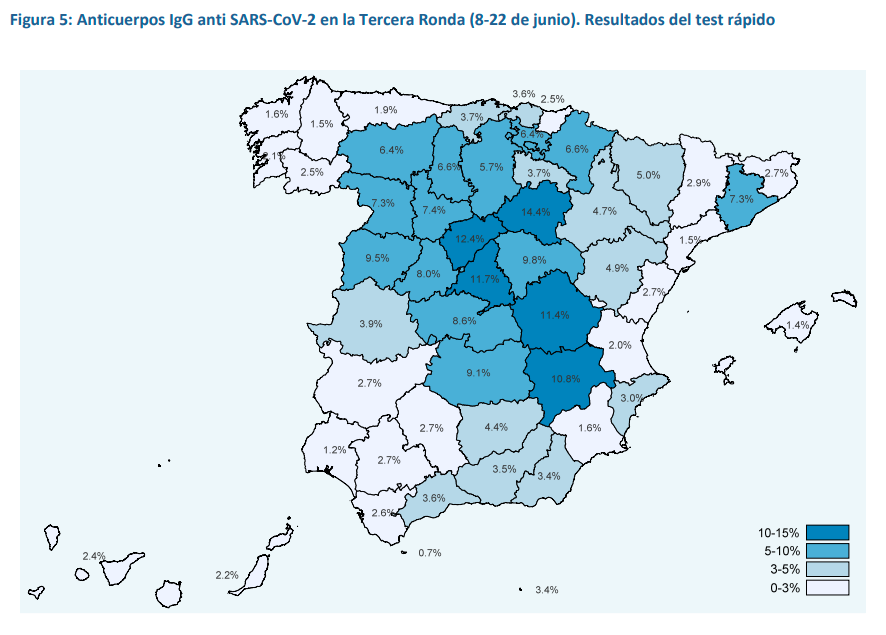
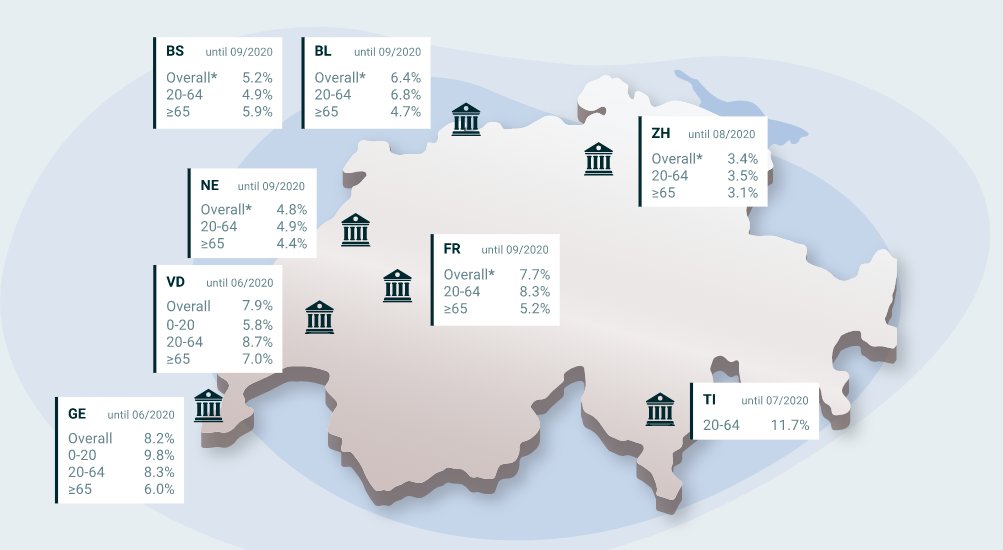
 https://twitter.com/AtomsksSa..." title="15/EIt& #39;s unlikely that prior infection with other coronaviruses explains this (see part 5/E), since:- innate immunity does not improve substantially- T cells do not primarily limit infections, beyond impacting on B cells https://twitter.com/profshane... href=" https://twitter.com/AtomsksSanakan/status/1309311345947484166">https://twitter.com/AtomsksSa..." class="img-responsive" style="max-width:100%;"/>
https://twitter.com/AtomsksSa..." title="15/EIt& #39;s unlikely that prior infection with other coronaviruses explains this (see part 5/E), since:- innate immunity does not improve substantially- T cells do not primarily limit infections, beyond impacting on B cells https://twitter.com/profshane... href=" https://twitter.com/AtomsksSanakan/status/1309311345947484166">https://twitter.com/AtomsksSa..." class="img-responsive" style="max-width:100%;"/>

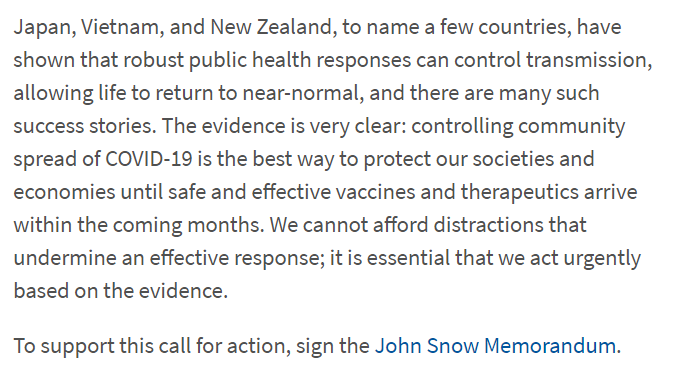 https://twitter.com/AtomsksSa..." title="18/ESo instead of making excuses about how southeast Asian nations have special exposure to other coronaviruses, or better immune systems, or..., we in western nations should own up to the reality that their policies + practices worked.Deal with it.https://abs.twimg.com/emoji/v2/... draggable="false" alt="🤷♂️" title="Achselzuckender Mann" aria-label="Emoji: Achselzuckender Mann"> https://twitter.com/AtomsksSa..." class="img-responsive" style="max-width:100%;"/>
https://twitter.com/AtomsksSa..." title="18/ESo instead of making excuses about how southeast Asian nations have special exposure to other coronaviruses, or better immune systems, or..., we in western nations should own up to the reality that their policies + practices worked.Deal with it.https://abs.twimg.com/emoji/v2/... draggable="false" alt="🤷♂️" title="Achselzuckender Mann" aria-label="Emoji: Achselzuckender Mann"> https://twitter.com/AtomsksSa..." class="img-responsive" style="max-width:100%;"/>
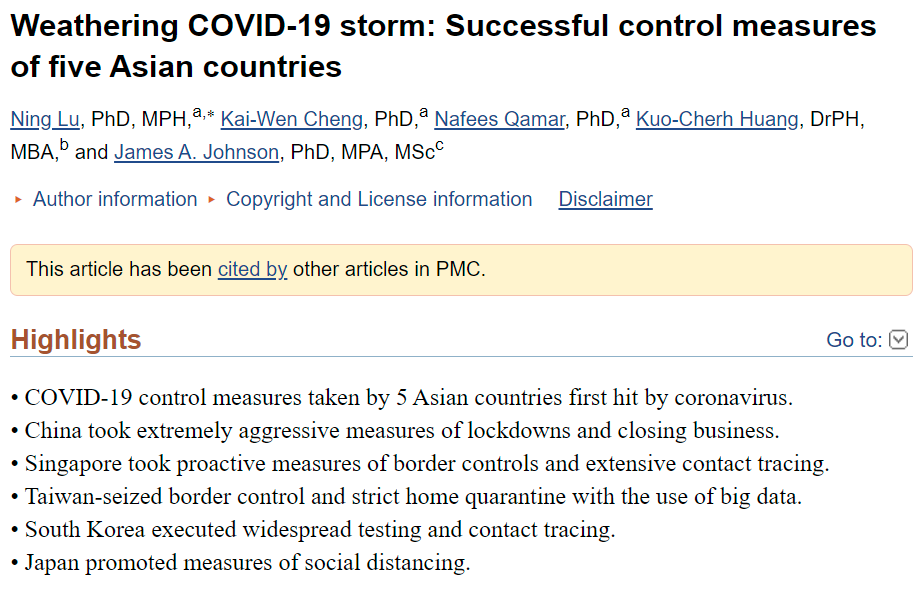
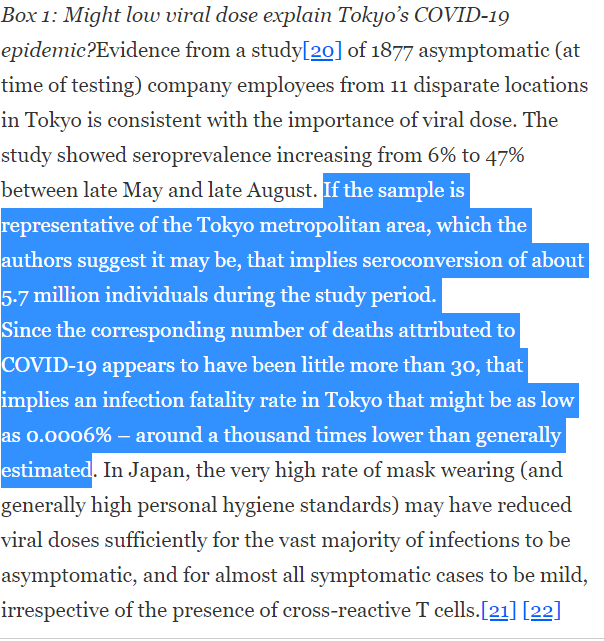
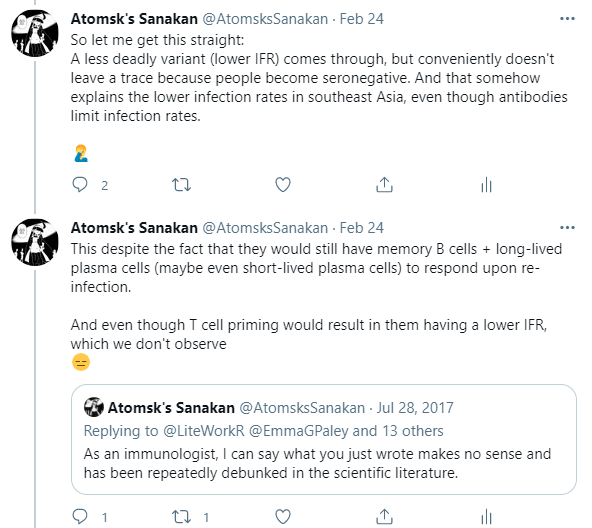
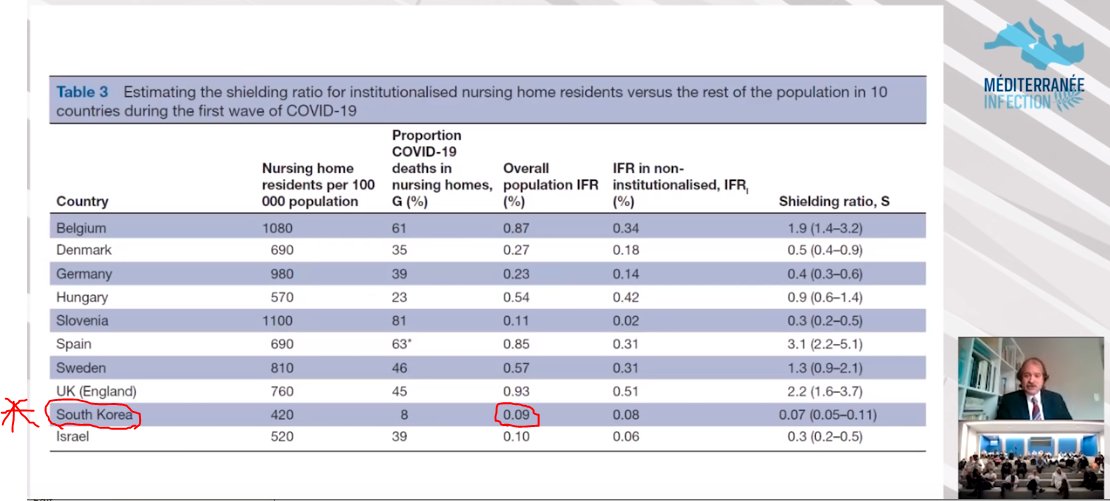 https://twitter.com/AtomsksSa... and 16:05 : https://youtube.com/watch..." title="23/EBelow John Ioannidis defends a failed version of explanation #3 in February 2021. He under-estimated IFR in southeast Asia, as covered in parts 8/E + 9/E, along with other threads. https://twitter.com/AtomsksSa... href=" https://twitter.com/AtomsksSanakan/status/13412867788845506563:03">https://twitter.com/AtomsksSa... and 16:05 : https://youtube.com/watch..." class="img-responsive" style="max-width:100%;"/>
https://twitter.com/AtomsksSa... and 16:05 : https://youtube.com/watch..." title="23/EBelow John Ioannidis defends a failed version of explanation #3 in February 2021. He under-estimated IFR in southeast Asia, as covered in parts 8/E + 9/E, along with other threads. https://twitter.com/AtomsksSa... href=" https://twitter.com/AtomsksSanakan/status/13412867788845506563:03">https://twitter.com/AtomsksSa... and 16:05 : https://youtube.com/watch..." class="img-responsive" style="max-width:100%;"/>
![24/ERe: "Ioannidis defends a failed version of explanation #3 [...]. He under-estimated IFR in southeast Asia"Update on Asian seroprevalence studies: https://www.thelancet.com/journals/... href= 24/ERe: "Ioannidis defends a failed version of explanation #3 [...]. He under-estimated IFR in southeast Asia"Update on Asian seroprevalence studies: https://www.thelancet.com/journals/... href=](https://pbs.twimg.com/media/EyYxaHcXAAgOeTB.jpg)
